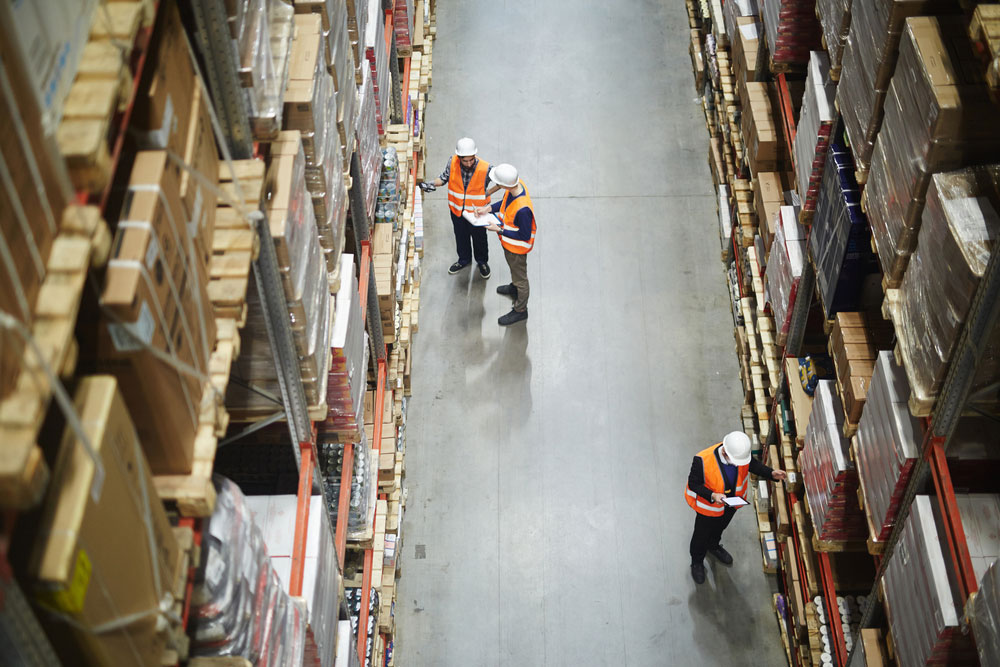
All business owners tend to think about inventory as invested liquidity and oftentimes overlook the insurance that inventories provide.
When you think about your demand and replenishment cycles, how you think about your inventory can have a huge impact on your decisions. Some companies tend to prioritize saving capital and order too little while others can overestimate their demand and storage capacities, creating problems for themselves.
Although most of what’s good for you is always relative to your particular product, industry and niche, there are general opinions held by experts about inventory management.
To help, Aaron Alpeter, CEO and founder of Izba summarizes how businesses should go about managing their inventory.
1- Inventory is Insurance
Aaron says, “It’s more than just the physical items that you have. Think of inventory as insurance. An insurance against risks such as increased demand or high sales.”
This means that when you’re thinking of how much inventory you should be holding, you need to understand the magnitude of risk you’ll have to manage as a business.
And as stated above, most of what you’ll face depends upon the type of product you’re working with. As Aaron puts it, “If you’re dealing with something extremely custom, you can afford to have a backlog because you’re making something really niche.”
For businesses that deal with products like a custom house, a pool or a wind turbine, there’s not a lot of substitutes or alternatives which is why customers and clients are okay with delays and disruptions.
“You can have your shipment come in 12 months from now and people are going to stand by and be okay with that delay.”
It’s only when you’re dealing with something highly commoditized that you bear the brunt of immediate demand and supply.
“If you’re selling something commoditized like shampoo and it’s not available when and where you need it, then you’re going to lose customers.”
Most consumers are not willing to wait months on end regardless of how much they prefer your brand which means that you can’t afford to have inventory running out for a substantial period.
2- Inventory is a Trade-Off
No brand would want to have irregular shipments but as difficult as it might seem, even predictions aren’t always reliable.
Issues with demand forecasting as well as supply chain elements being affected by external factors can make it extremely tedious to initiate a regular inventory cycle.
Considering the increasing costs involved in switching out inventories is also one of the major factors businesses tend to tread carefully around inventory management.
This is exactly why Aaron says, “Inventory is a tradeoff. Inventory is basically cash in illiquid form and what that means is that you’re trading liquidity for this insurance policy. The higher the amount of inventory you have, the more cash you have soaked up in there.”
Obviously, this spells out the lack of resources available for weathering storms, initiating marketing and R&D projects, etc.
“Since it affects everything, it’s important to not make inventory choices in a vacuum.”
You can’t just look at some demand forecasts and order thousands of units without thinking about your business’ needs other than inventory.
Whether you’re anticipating supply chain issues in the future or just looking forward to a good season, you shouldn’t isolate inventory-related decisions from the rest of your business.
For example, a business that needs to out-market its competition needs to focus on its promotional campaigns and customer experience improvement while catering to a predicted increase in demand.
Such a business wouldn’t be able to benefit from all-out investments in inventory replenishments.
3- Calculate Cycle Time
Every business has a supply chain that involves transporting supplies to the manufacturer, making the product, getting it to the carriers and finally delivering it to your stores or fulfillment centers.
This means that all supply chains have an effective cycle time that businesses need to work around. The journey of the product starts from the moment you punch the order in.
More often than not, the cycle time is always estimated to be a little more than the actual calculation.
This is to account for unexpected delays and disruptions that your supply chain can experience. Thinking of your cycle time with a buffer can save surprises and critical waiting periods down the line.
An example of a cycle time can be surmised by considering a business that has its production factories based overseas.
So, if the factory needs 30 days to finish making a product after you’ve punched the order in, this means it’ll take them at least 30 more days to get the product on a boat or a plane.
Depending upon your medium of transportation, you can be looking at additional days that you want to cover along with miscellaneous delays. To make things easy, a business owner can make a decision to have at least 45 days worth of inventory in addition to the previously calculated time.
This means your business should have 135 days worth of stock that you’re holding at any given time to avoid having an inventory shortage. And most of it is going to be in transit at any given time.
A question that comes to mind in such a scenario would probably be:
How can you decrease the transit time and shorten your supply chain?
There are two ways you can reduce your transportation time. One is switching to air freight. While it will drastically reduce the time it takes to transport the product across seas, it will also cause a significant rise in costs.
The other way you can shorten your supply chain is to move your factory closer to your warehouses.
Although a long-term decision that didn’t make sense pre-pandemic, many businesses are prioritizing moving their factories closer to home even if the costs are high just because they don’t want to risk another supply chain crisis.
Cheap labor and production costs might be appealing but compared to geopolitical upheavals and border closures causing massive supply chain issues, it’s not a bad decision.
4- Inventory Strategy and Business Decisions
As Aaron states, “Businesses need to prioritize their decisions and not look at their inventory in a vacuum”. Other than the apparent capital investment, businesses take a substantial amount of risk when buying up inventory.
Ultimately, your business decisions affect your inventory strategy and vice versa.
In situations such as strikes, riots and border closures, there’s a significant chance that your inventory can get stuck somewhere you have no control over.
Although carriers and 3PL providers try to anticipate such scenarios and not take up contracts for the days they think aren’t safe, things can turn south at any time.
This is why it’s important to always consider supply chain and inventory insurance policies that cover damages and losses.
More importantly, as a business owner, it’s your responsibility to understand the departments of your organization that need resources.
Several businesses blindly order inventory without anticipating the needs of their marketing and production departments.
It’s one thing to prepare for a rainy day but if you’re ordering up inventory without expected problems, make sure you’re considering your business operations before you punch that order in.
5- Take Responsibility for Inventory
This is for every business, regardless of your product type, industry or niche. You have the responsibility to ensure that your product’s journey ends without causing harm to the environment.
Particularly for businesses that deal with plastic and tech gadgets, the impact of wasted products is devastating.
It’s not just an ethical responsibility but also a legal and market requirement in order to compete. In the EU, you can’t engage in business until you satisfy the government of your product’s lifecycle, particularly its ending. The product must either be biodegradable or recyclable before it is approved for launch.
Whether it’s your target audience, the state’s government where you’re operating, or your own decision that makes you take responsibility for your inventory, you have to make sure that everything is planned outrightly and clearly.
Need Help Managing Inventory Problems?
Supply chains can be tricky to manage and seeking help from consultants is always an option. Don’t hesitate to call up experts at Izba to have a discussion at length about your business and ways to optimize it.





1 thought on “5 Key Tips for Managing Inventory”
Pingback: How Do Businesses Handle Excess Inventory? - izba